Three essential things that have molded the Florida Scrub-Jay’s intelligence are their complex prefrontal cortex, their cooperative breeding strategy, and the ecosystem they call home.
Scrub-Jay intelligence has always captivated me. This genera of birds (Aphelocoma) is a member of the Corvidae family, including crows, ravens, magpies, and other jays.
Corvids have a well-deserved reputation for their intelligence and problem-solving skills, and Scrub-Jays are no exception.
The birds we will discuss today are at the pinnacle of avian intellect. Some researchers dispute this claim, but I will give you my thoughts on why they are mistaken.
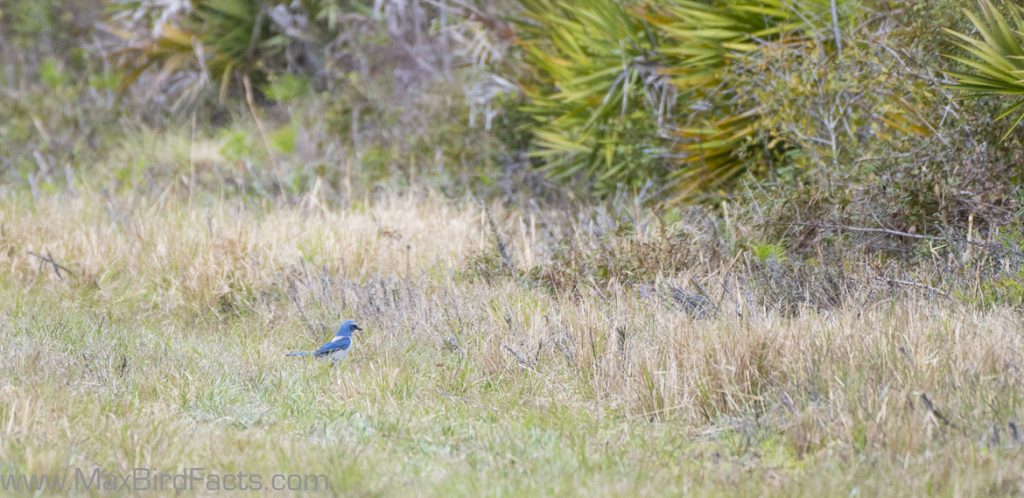
I’ve split this article into three major sections, each one focusing on Florida Scrub-Jay intelligence:
- The Florida sand pine scrub ecosystem
- Their brain structure compared to other birds
- The rare cooperative breeding strategy they implement perfectly
Each of these factors intermingles and works cohesively together. Without all of them working together, I don’t think these birds would be as bright as they are.
The relevant distinction between the Florida Scrub-Jay and its cousins will come up later in the article and is vital to understanding their aptitude.
Before we learn about these marvelous jays, I think it is necessary to understand their influential and unique home.
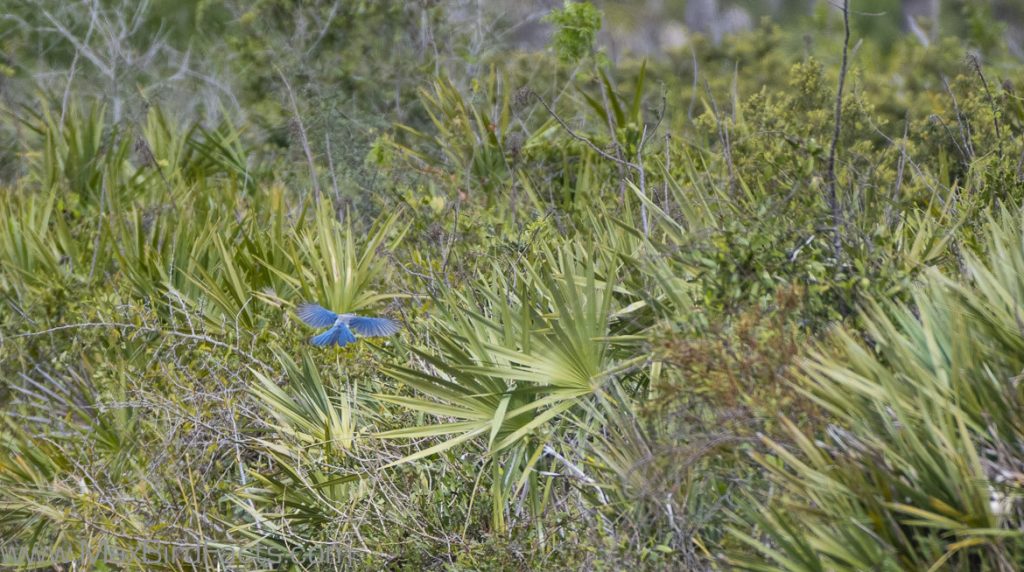
Pine Scrub Ecosystem & Lightning Fires – Mother Nature Knows Best
An ancient and truly Floridian ecosystem, the sand pine scrub is a strange place to call home.
When Florida was still mostly underwater millions of years ago, small islands poked up from the sea where plants and animals sought refuge.
As the state rose from the ocean, these islands stayed distinct environments compared to the new land. They were essentially remaining their own islands in a sea of forests, grasslands, and marshes.
Today, this ecosystem is one of the rarest in Florida, making up only 2.28% of the total landmass. This is a frightening number when nearly all life found here is unique (40 plant and 50 animal species).
Florida pine scrub is very distinct from other ecosystems in the state and even those neighboring it.
The defining feature of the Florida sand pine scrub ecosystem is the scrub itself. Oak, pine, and palmetto make up the primary vegetation.
Except for the lonely palm trees, the foliage doesn’t get much taller than five feet.
The ground under your feet is loose sand and patches of bristly grass. This soil doesn’t hold water or nutrients very well, forcing the creatures that live here to become remarkably hearty.
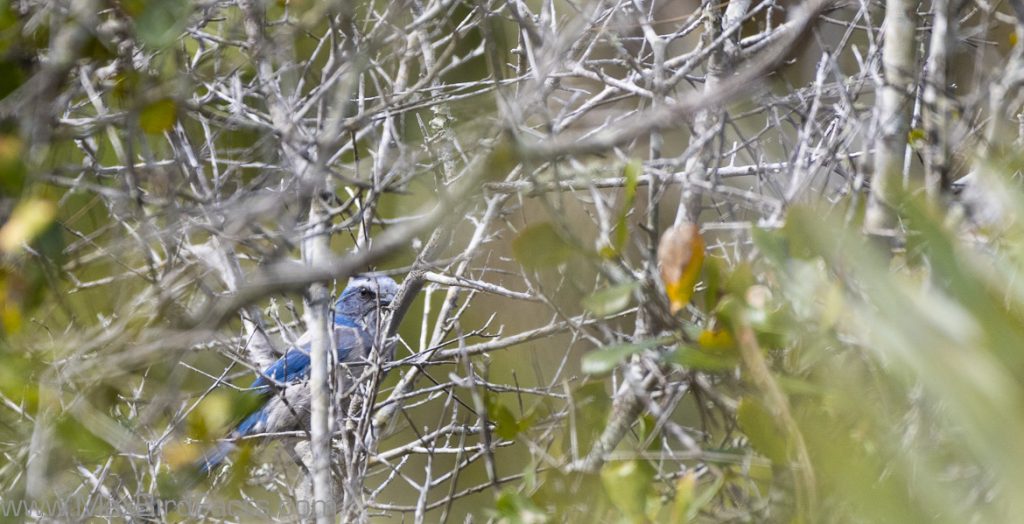
Everything in this ecosystem feels like it has been windswept for years, wicking away all the moisture.
Wiry oaks bend and contort to the unprotected landscape while brambles cling to their bark. Only small patches of shade afforded by the needles of low-hanging longleaf and sand pines mingling among sand live and myrtle oaks offer relief for the animals here.
Sharp palmetto fronds form barricades, stopping unwelcomed guests from entering this rare glimpse into Florida’s prehistoric past. You can hardly push through this shield of leaves and branches without tearing up your skin and clothes.
All this density can come at a cost. The denser the plant coverage becomes, the harder it is for animals to forage. But of course, nature has come up with a flashy solution to this.
If you’ve lived in Florida, you’ll be well aware of our intense lightning storms. The build-up of leaf litter and dead plant material on the pine scrub floor creates a tinder box.
When lightning strikes one of the solitary sable palms, it sparks a roaring fire. These lightning fires might sound terrible and incredibly destructive to this fragile ecosystem, and you think the same way naturalists and ecologists did decades ago.
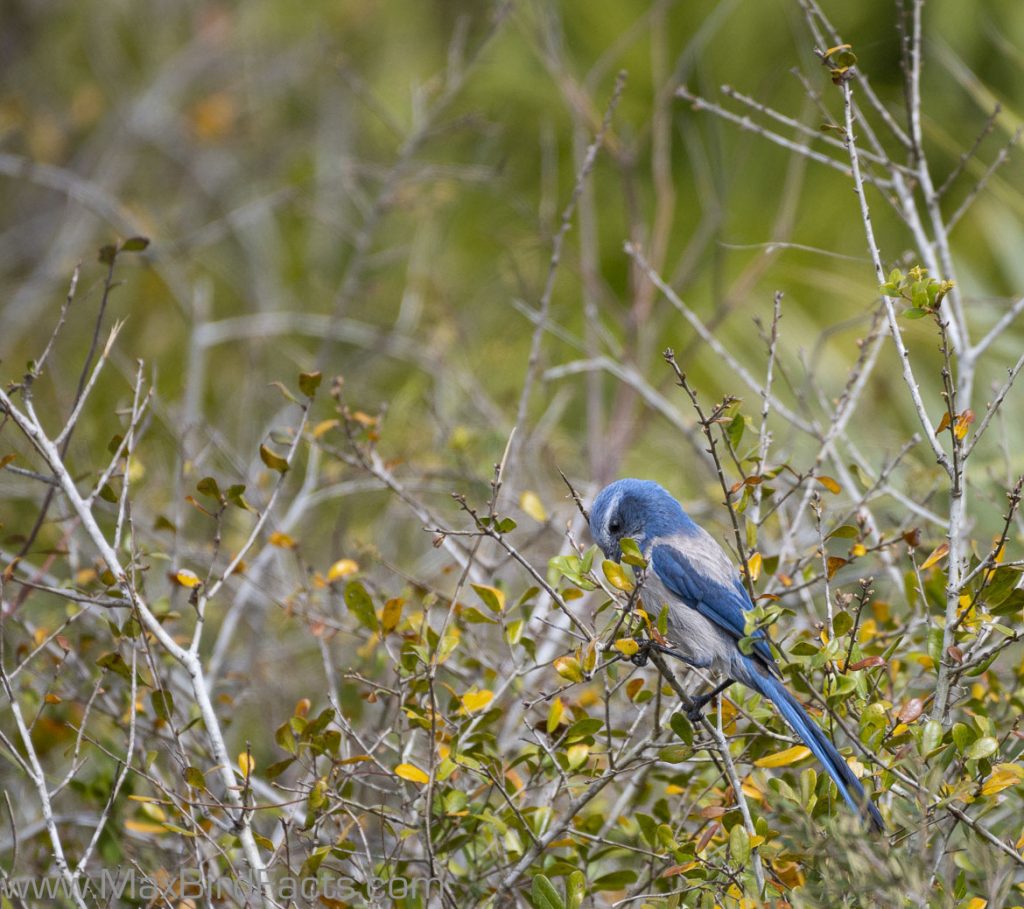
It was, and still is in some places, a common practice to extinguish wildfires as soon as they materialized. This practice came with disastrous consequences.
Nature had figured out how to run reliably long before humans came along with the thought that we know how everything should work.
When people stopped all the wildfires thinking they were helping the Florida scrub, they were actually smothering it.
These natural lightning fires burn up dead material, as well as some living plants. This cleansing creates open patches of soil and light for new life to spring up.
The burnt plant material also releases vital nutrients into the unproductive soil of the area. Carbon, nitrogen, phosphorus, and other essential elements needed for plant growth are reabsorbed into the sandy soil for the next generation of plants to suck up.
The ability for openings also allows the ecosystem to adapt to changing environments. Stopping the fires would hold the area in a way that was beneficial for the temperature, climate, water and nutrient distribution, and many other factors at that time.
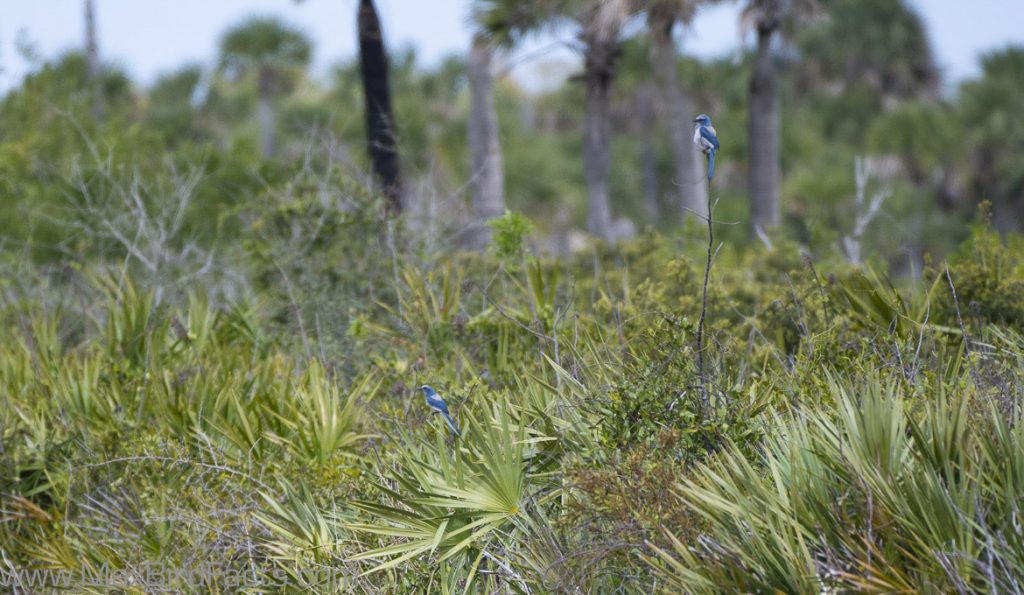
Without wildfires removing this old growth, this confined ecosystem started to decline. These same scientists were caught scratching their heads, wondering why there was a decline in the species living in Florida scrubs.
Eventually, a massive fire engulfed this ecosystem because of the build-up of dead plant material from the decades of smothering lightning fires. After the flames died off, scientists thought this rare environment had finally collapsed. However, to their surprise, life began to spring back rather rapidly.
Some of the plants here have adapted to these fires by storing seeds in the sand to stay safe. Other plants can spring back from stores in their roots that survived the inferno.
Currently, Florida uses a mix of control burns and lightning-started wildfires to keep its ecosystems healthy and natural.
These fires have been the way for millions of years, and they will continue for millions after we’ve left; it is crucial to see when nature has come up with its own solution.
So, now that we’ve probably gone a little more in-depth into the Florida sand pine scrub ecosystem, let’s get back to our Florida Scrub-Jays!
Scrub-Jay Prefrontal Cortex & Behavior – Bird-Brained is a Complement
I think the best way to introduce these birds is by looking at their minds. In the early days of modern science, researchers primarily used pigeons and chickens in experiments.
The main reason for this was because of how cheap and easy to gain these birds were. Unfortunately, these birds are not the best place to start the benchmark for bird intelligence, which could be the cause of the insult of being “bird-brained.”
- Side note: It really bothers me when I hear someone use “bird-brained” as an insult. It shows the lack of understanding of how brilliant birds are and is more of a compliment than anything. I would even say some birds are more intelligent than some people.
Recent research is showing that even pigeons and chickens are surprisingly intelligent compared to our previous understanding. Yet, they are still nowhere close to the mental capacity of other birds.
Corvids, like our Florida Scrub-Jays, are among some of the most intelligent animals currently alive today.
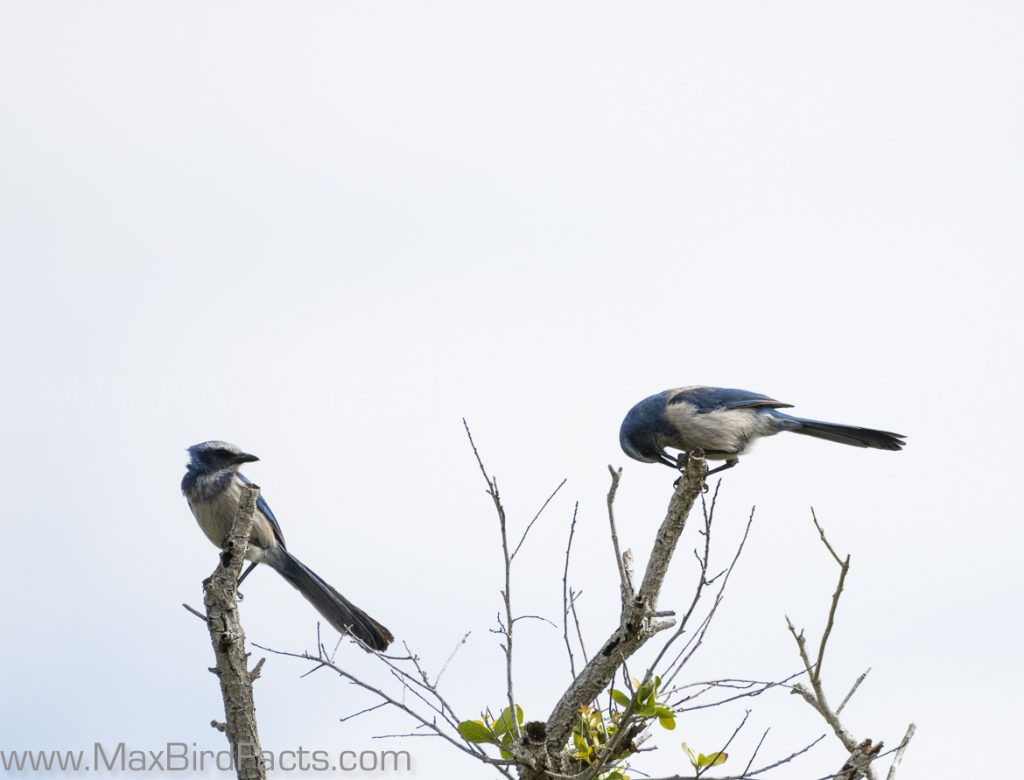
They show problem-solving, tool use, tool modification and creation, and long-term memory of individuals and events.
Not even mentioning the new research conducted to determine if members of this family mourn their loved ones, do certain behaviors and actions only for fun and not survival, and have a complex range of emotions we typically associate with higher-level mammals.
All of this could become a series of articles, and it very well may. However, we are focusing on the spectacular intelligence of our Florida Scrub-Jays here.
Starting with the brain itself, the prefrontal cortex in these jays is much more developed than in other birds. This cerebral complexity is a shared trait among nearly all Corvidae. It is how these birds have gained their reputation for their wit.
The prefrontal cortex of the brain is commonly thought to house “higher thought” and is the cerebral cortex in humans. This part of the brain doesn’t serve much of a function in survival.
Only a tiny percentage of animals have opted to have a substantial section of the brain dedicated to thinking compared to sight, taste, smell, or hearing.
The interesting thing about bird brains is how efficient they are. Like everything else about birds, they have streamlined their brains to be as efficient as possible for their size.
Actually, a bird’s brain is more effective compared to that of a mammal. On a one-to-one scale, contrasting a bird’s brain to a mammal’s brain, the bird will have more neurons packed into its tissue.
Avian brains typically contain three to four times denser neuron formation when compared to mammalian brains.
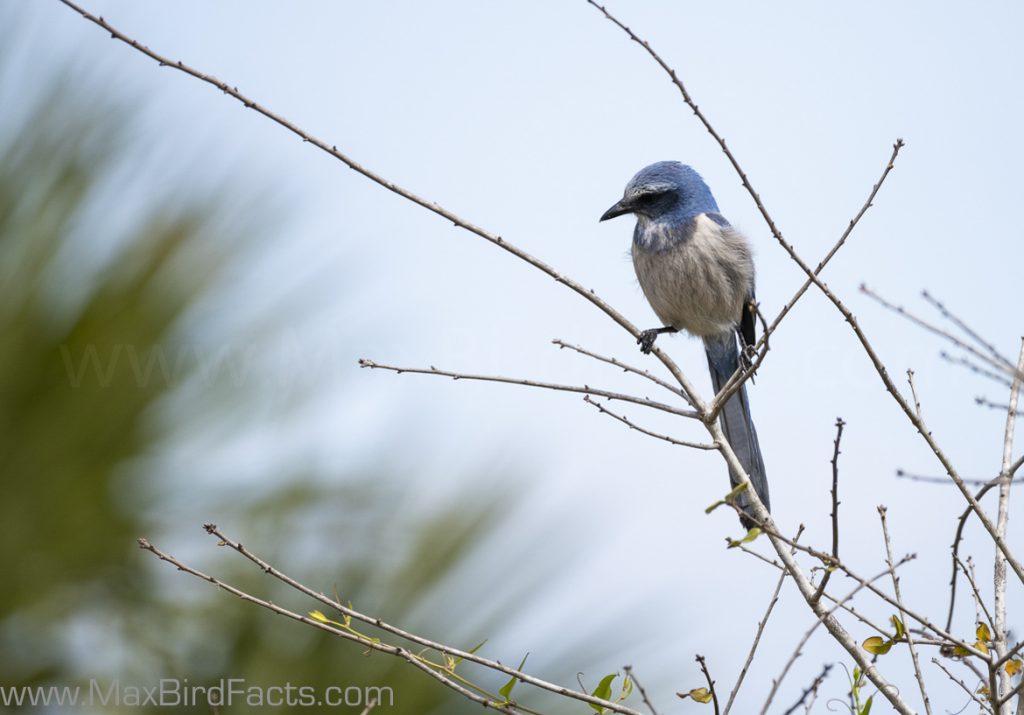
The neuron is the basic unit of the brain. Meaning the more neurons there are in the different brain sections, the more effective they will be.
One of the most famous avian behavior researchers, Irene Pepperberg, made the analogy that comparing bird and mammal brains is like comparing Mac to PC. Just because we can understand one of these better than the other doesn’t make the other any less profound.
This intelligence is shown perfectly with the Scrub-Jay’s memory and food storage.
Florida Scrub-Jays show episodic memory, or the ability to store long-term memory of events, locations, emotions, and experiences around a specific time and place.
For the longest time, apes and dolphins were the only animals besides humans thought to have this memory level. But now we are finding more and more animals that fit this behavior, and most of them are birds.
This memory is so vital for the ecosystem these jays call home. Scrub-Jays can gather food during times of plenty and hide it in caches for leaner times.
Burying and storing food isn’t an uncommon behavior on its own. Squirrels bury acorns all the time to save them for winter.
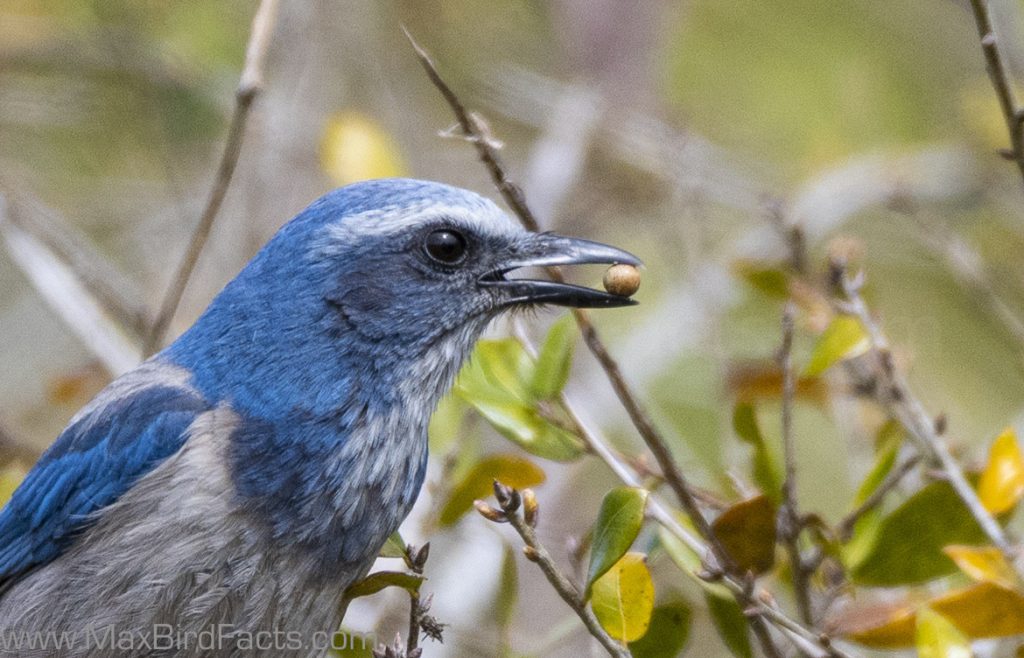
The difference here is the squirrel will almost always forget the exact location it concealed the acorn, whereas the jay will not.
The jay’s ability to accurately recall what it hid and where it put the food is mindblowing. Researchers were able to study these birds and realized they would go after the food stores that would spoil first.
Just like when we look at expiration dates on the food we get at the store, these jays are aware of how long they have before their meals start to go rancid.
Knowing where you hid your meal is very meaningful when you might not have another one coming soon.
Oaks go through a process called masting when they reproduce. Masting is where the tree will go through periods of little to no acorn production and then deliver a colossal sum of nuts.
This reproductive system creates a massive surplus of acorns that predators can’t possibly wholly devour and assures the growth of new saplings.
So why was it necessary to talk about oak tree reproduction?
This overabundance, followed by years of deprivation, could be the root of Florida Scrub-Jay intelligence.
Because of the harshness of the scrub environment, these birds needed to take advantage of these times of excess.
Gathering acorns and storing them in hideaways gives the birds a buffer if they cannot hunt or gather other food.
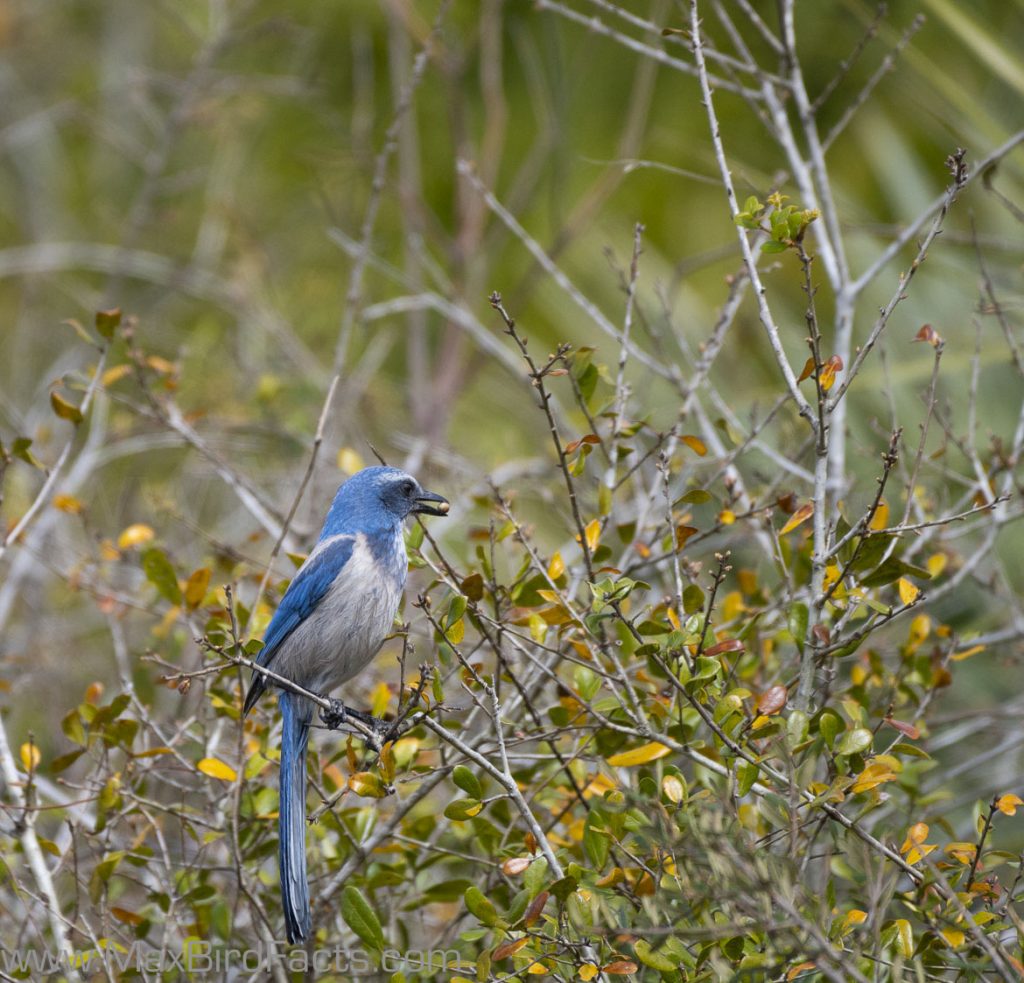
During the years between masts, the oaks may only provide a small amount of food, but it can be more than enough for the jays when added to previous stores.
But all of this storage would be useless if the bird can’t remember where it put this vital resource.
Because of the Scrub-Jay’s need to remember these stockpiles, the birds that could recall more accurately where they hid their supplies were more successful.
Over millions of years of selective pressure, we now have the well-defined prefrontal cortex seen in modern Florida Scrub-Jays.
Going back to our squirrels, once they have buried an acorn or another food source, they will only be able to find a quarter of those stored. The squirrel’s sense of smell, not its memory, is the cause of this small percentage of success.
Compare this to the near 90% accuracy of the jay when finding the correct food store before it spoils through memory alone.
I know I have a hard time finding something right after putting it down, let alone something I hid away months ago.
Now that we know the machine that provides astounding intelligence in Florida Scrub-Jays, let’s talk about how they use it.
Cooperative Breeding & Social Behavior – Staying Home to Help Your Parents
Not uncommon among birds, Florida Scrub-Jays take part in biparental care. Biparental care is probably the most common parenting strategy with birds.
Having both parents there to protect, feed, incubate and support their young gives them a better chance of survival.
The more fascinating behavior among Florida Scrub-Jays is their cooperative breeding strategy.
Cooperative breeding accounts for less than 5% of all avian species. It is a hallmark of intelligence, sophisticated thought, and social structures.
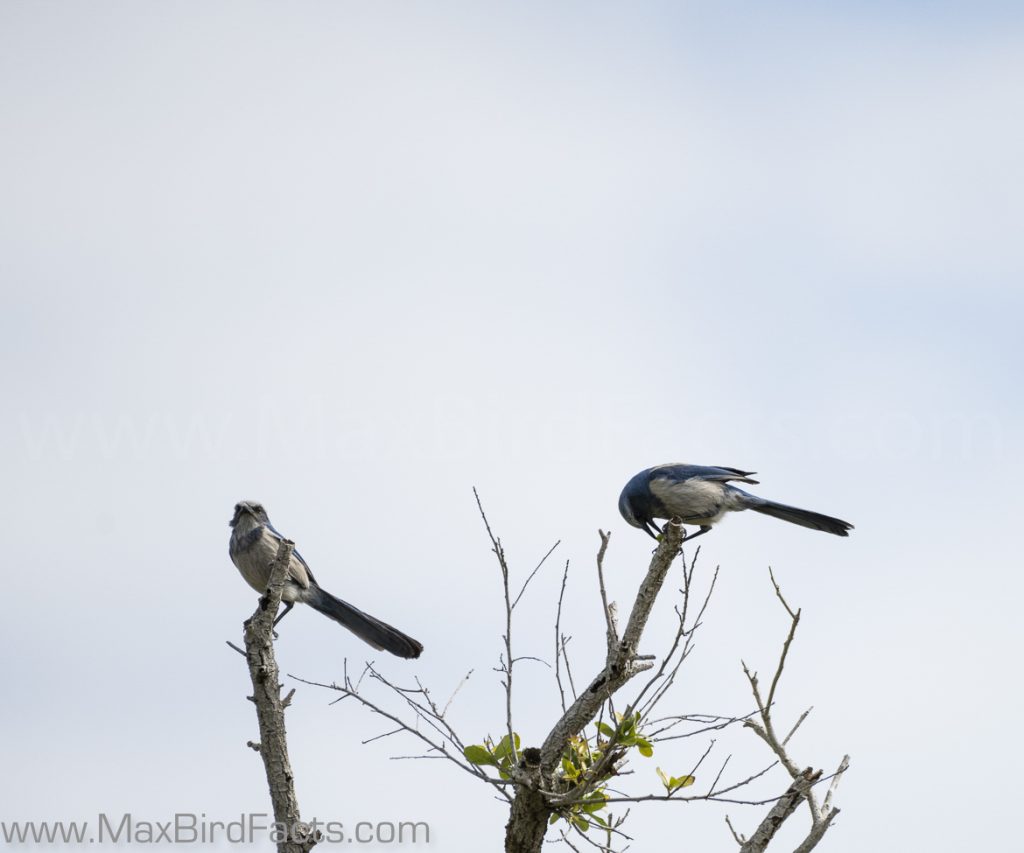
This is where Florida Scrub-Jays stand apart from the other members of their genus, Aphelocoma. Within the seven species that make up the Scrub-Jay genus, only the Florida and Mexican species participate in cooperative breeding.
The cooperative breeding strategy is defined as having nonparental adults assist in the rearing of young. It is a bizarre thought for an animal to give up their own chances of raising chicks to help out another family.
These helpers are usually blood-related to the offspring or the parents. In the case of our jays, the helpers are commonly older siblings to the new chicks.
Kin selection, the process in which family members help each other, is seen throughout the animal kingdom. We, as humans, use it all the time.
Imagine if two people ask you to help move heavy furniture on your one day off during a busy week.
One person is a coworker or classmate, while the other is in your immediate family (mother, father, brother, sister, etc.).
I would be willing to put money on your decision to help your family member above your coworker. Even with these two events being completely independent of each other besides the person asking, you are always more likely to help your kin than someone else.
This choice is the basis of kin selection. You will help your family because you are aiding the genetic lineage you are connected to in a more animalistic sense.
This behavior is even more sincere when animals are helping their younger siblings or even grandchildren. Helping their kin gives the newest generation an even better chance at survival.
So instead of just the two parents in the biparental care system, Florida Scrub-Jays can potentially have two or three more birds helping around the nest because of cooperative breeding!
But why wouldn’t these fledged jays take off and find their own home?
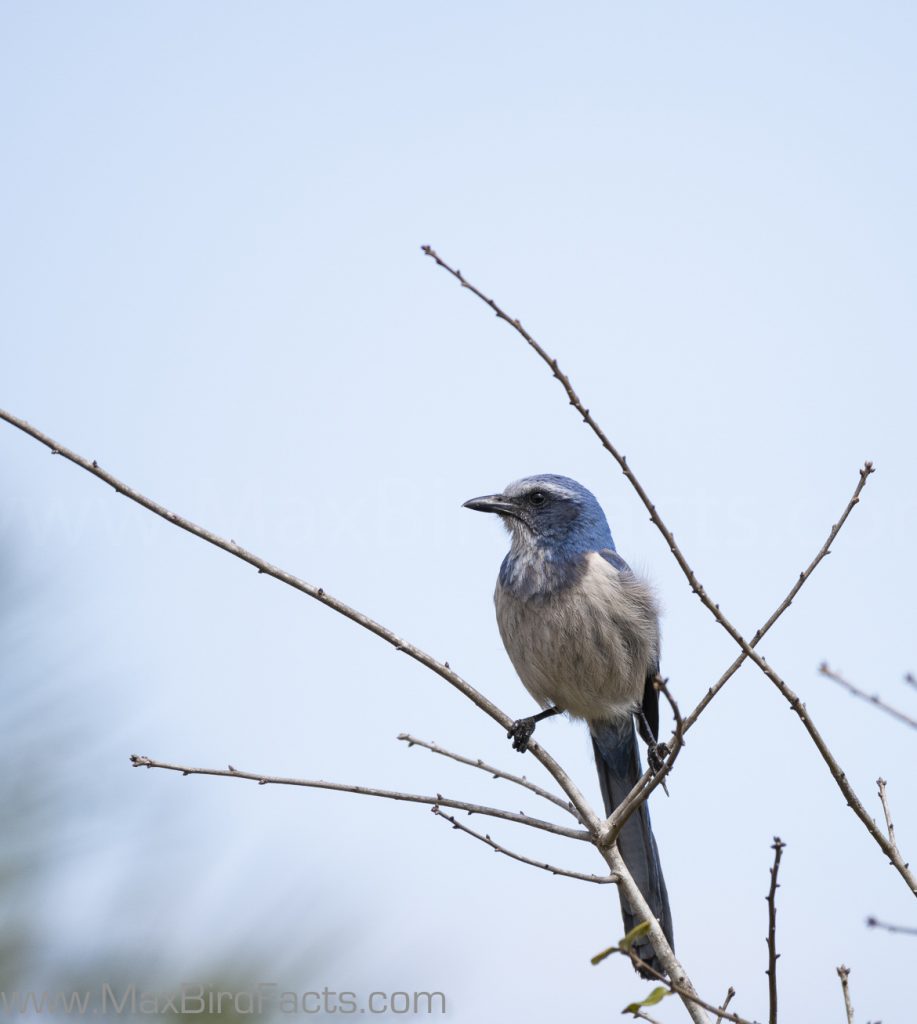
Like most of the animals and plants found in the Florida sand pine scrub, our jays have particularly adapted to survive here. Because of the adaptations that help them thrive in the scrub, they cannot move out into the marshes, grasslands, or forests throughout the state.
After the young Scrub-Jays hatch, they have two choices. The first is to leave and try and find their own territory, and the second is to stay home and help their parents.
The young birds will have difficulty finding new territories in the already small sand pine scrub ecosystem.
Florida Scrub-Jays require a dominion that spans over 20 acres. It has to supply food, water, and protection from predators and the elements.
But if the jay stays, it will be in an already established territory with all the necessary resources and previously stashed acorns and other food reserves.
If the young jays remain to help their parents, they also will receive the territory once they pass.
So, from that standpoint, it becomes a lot more clear why the young Scrub-Jays stay with their parents after fledging.
There is another benefit from this that we can see in the population of these magnificent birds.
Birds that get extra help from their kin through cooperative breeding can produce more offspring.
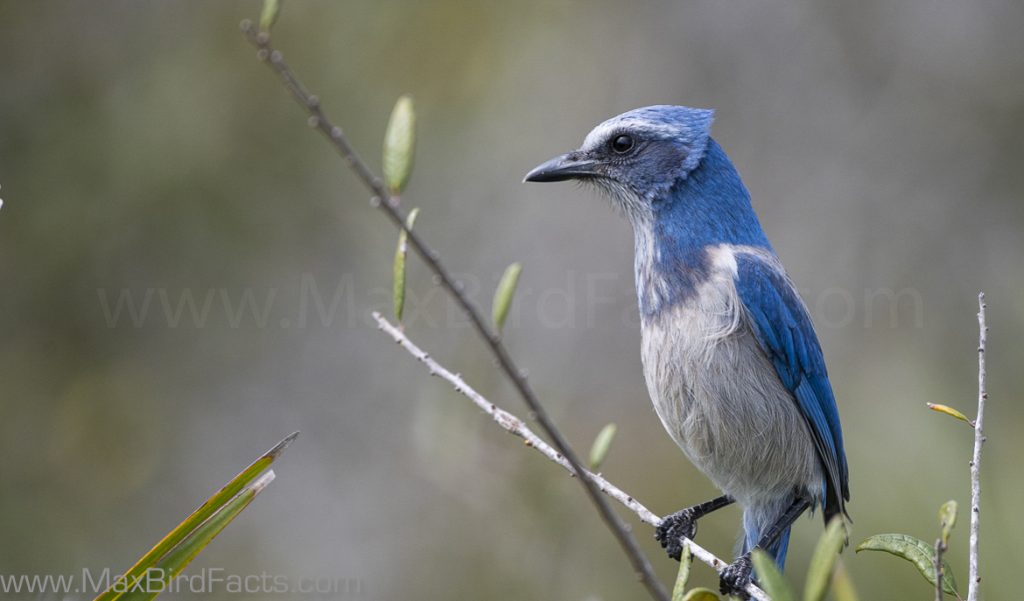
On average, a Florida Scrub-Jay nest sustained through cooperative breeding can have two additional eggs. Two more eggs may not sound like much, but that doubles the usual number of chicks.
The helping hands of their older siblings will also give the family a higher success rate of the chicks reaching adulthood. Both the older and younger siblings gain another advantage by staying with their parents.
On some occasions, three or four generations of jays will live together. Each of these birds will bring all the knowledge gained through the combined years of their lives.
As we talked about in the previous section, the complex prefrontal cortex of the Scrub-Jay’s brain works brilliantly to remember food store locations.
Regardless if the store was made in the previous weeks, months, or years, the birds can accurately recall when to retrieve the food before it spoils.
This complexity, driven by the need to remember food stores, also allows them to retain long-term memory of events that helped them survive.
I think this sharing of knowledge could be another reason the older siblings choose to stay. We as humans learn so much from our parents, arguably more than we do through formal education.
Why would it be such a stretch to make the same claim about our avian friends?

It is a commonly held fact that mammalian offspring learn how to hunt, forage, and groom from their parents. We also know that young birds learn songs, navigation, and foraging strategies from their parents.
And as we discussed in our brain section, the avian brain has roughly four times the neuron density than mammalian brains.
This increased density in the already intricate prefrontal cortex of Florida Scrub-Jays should easily allow this complex behavior and social fluency level.
The exchange of learned knowledge could also be a form of payment between the parents and older siblings.
In return for the siblings collecting food and protecting their young, the parents could recant stories on how they’ve survived.
Tails about disasters that nearly wiped away their region or how they could frighten off a bobcat could be passed to the older siblings so they know how to act if this should ever happen to them.
This may well be conjecture and attaching an anthropomorphic view onto these animals. But in reality, we as humans are also just animals.
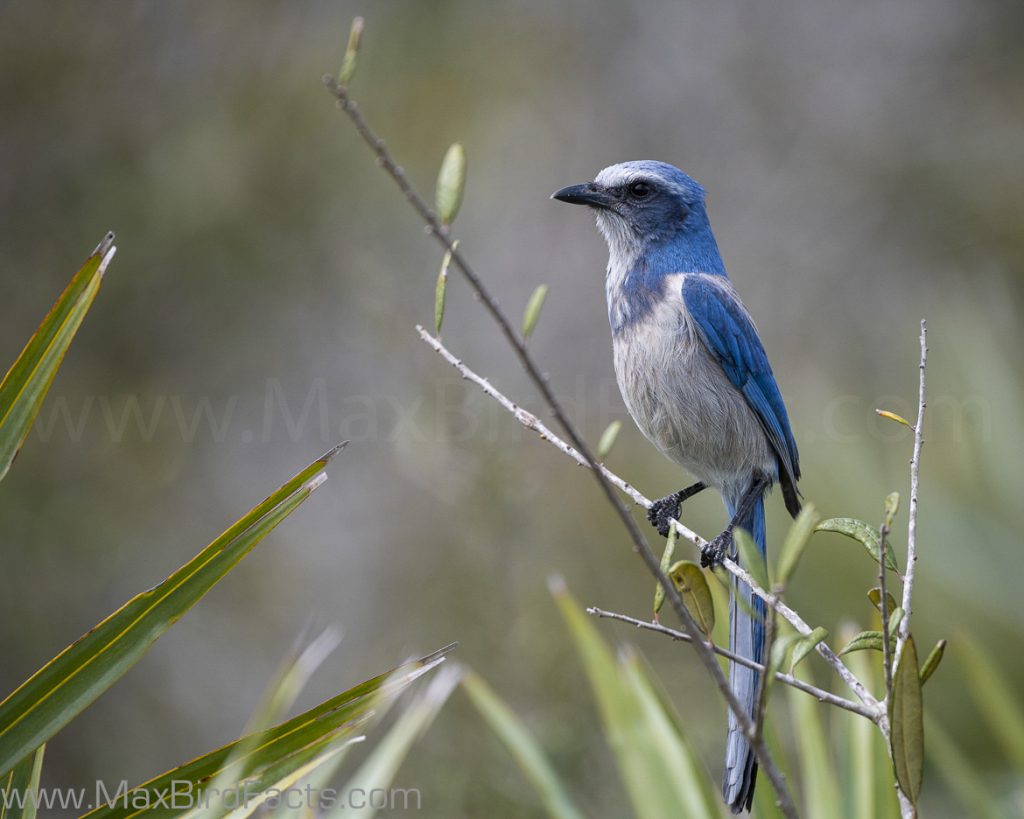
How different do our squawks, yells, chatters, whistles, and talking sound in the ears of a jay?
Again, it’s like comparing the software of a Mac to a PC. Both are incredibly intricate pieces of technology, but both are entirely different and have minimal overlapping commonalities.
I don’t think it is a very far-fetched idea that all the strange noises coming from birds is equivalent to the tones we use during a conversation.
Ultimately some of the chicks will have to leave the established territory formed by their parents and find their own homes. There are only so many birds each of these 20-acre plots can carry.
So through hunger or being driven away by their loving parents, the young jays will strike off on their own.
But because of the increased support from their parents and potentially two or three generations of collective knowledge, these birds will have a great headstart.
Now We Know Scrub-Jay Intelligence
I hope you have gained a new appreciation for the term “bird-brained” after learning how intelligent Florida Scrub-Jays are.
Ancient islands poking above the sea while Florida was still submerged became the scrub habitat these birds adapted so perfectly. The windswept landscape that covers only a fraction of the state is a strenuous place to survive.
Food and water can be scarce in the loose, sandy soil. Our birds solved these problems with their brain rather than their brawn.
Scrub-Jay intelligence can, at an anatomical level, be understood by the brain’s structure.
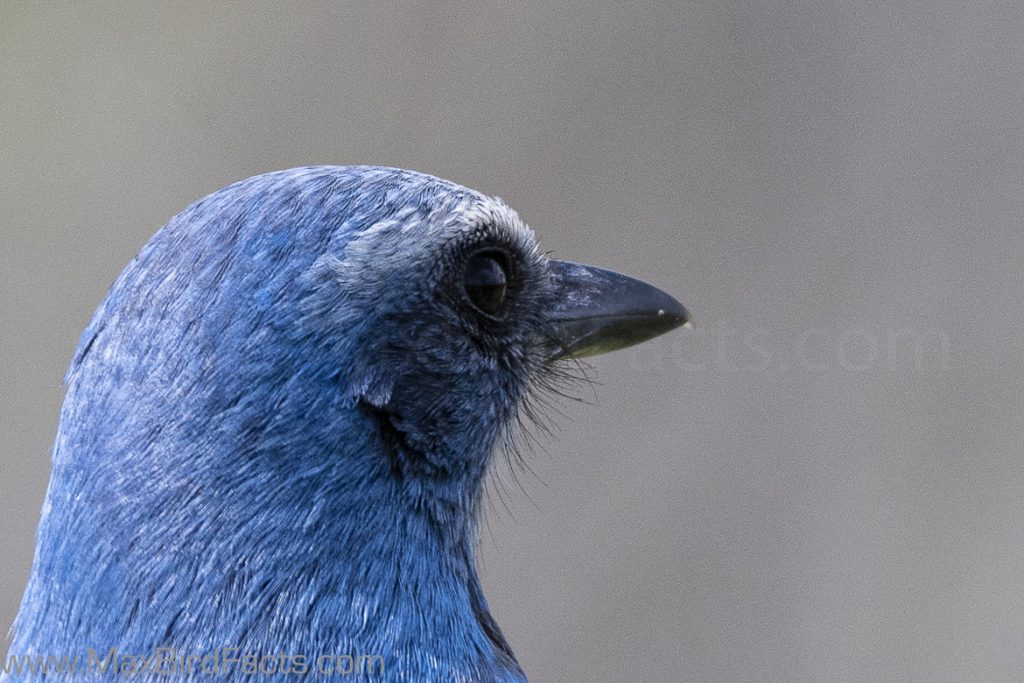
Match this with a more than competent prefrontal cortex, and you get one of the most intelligent avians in the world.
The drive for this big brain was originally to remember where food stores were made during times of plenty so the jays don’t starve during leaner years.
Bird brains are highly efficient and have nearly four times the neuron density compared to mammalian brains.
The increased complexity of their brain allowed more complex behaviors within Florida Scrub-Jays.
Cooperative breeding and kin selection promote older siblings to stay and assist in the rearing of their younger brothers and sisters.
The older siblings obtain the knowledge their parents earned and potentially their territory.
What a remarkable bird!
Thank you so much for reading through my article, I hope you learned something new today and you look at our feathered friends a little differently now because of it!
Get Outside & Happy Birding!
Max
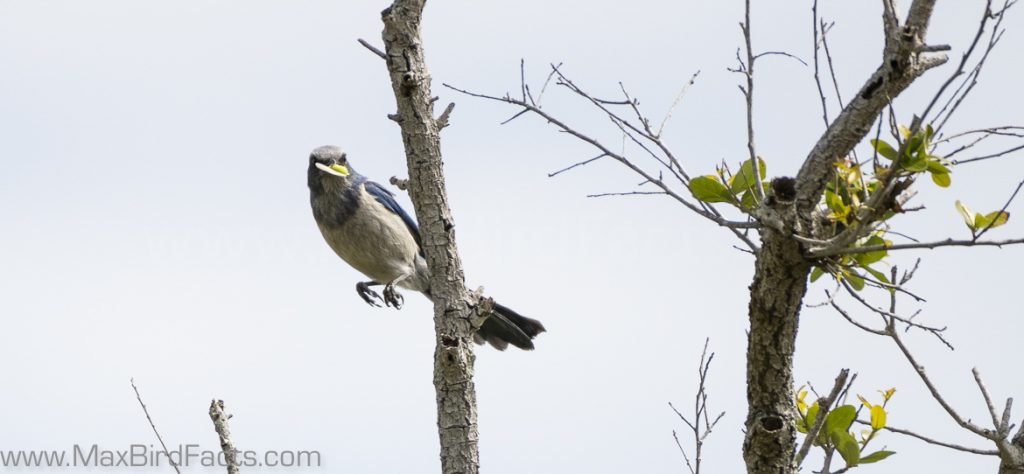
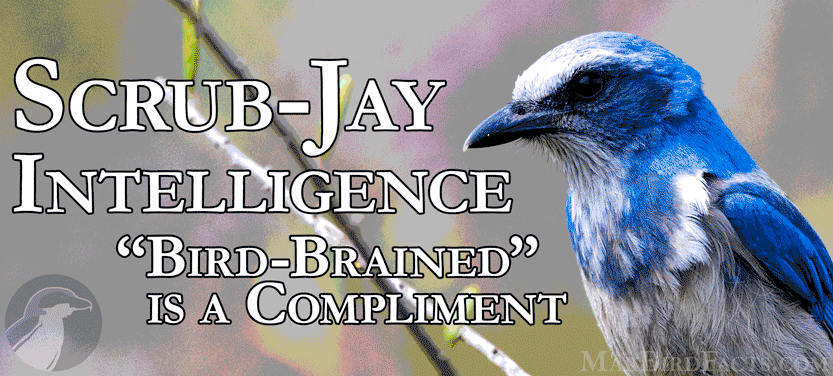
Dude, please tell me that youre heading to write a lot more. I notice you havent written an additional weblog for a while (Im just catching up myself). Your blog is just too important to become missed. Youve received so very much to say, this kind of knowledge about this topic it would be a shame to see this weblog disappear. The internet needs you, man!
Pingback: Are Birds Diapsids – Technicalities Of The Modern Dinosaur – Welcome to MaxBirdFacts.com!!!